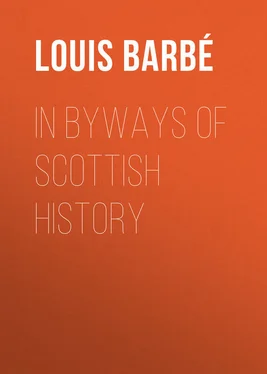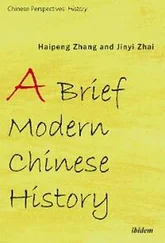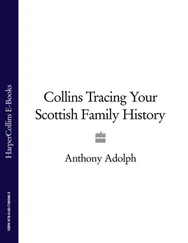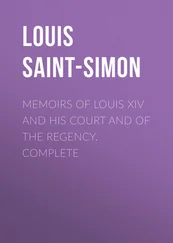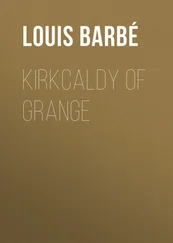Louis Barbé - In Byways of Scottish History
Здесь есть возможность читать онлайн «Louis Barbé - In Byways of Scottish History» — ознакомительный отрывок электронной книги совершенно бесплатно, а после прочтения отрывка купить полную версию. В некоторых случаях можно слушать аудио, скачать через торрент в формате fb2 и присутствует краткое содержание. Жанр: foreign_antique, foreign_prose, на английском языке. Описание произведения, (предисловие) а так же отзывы посетителей доступны на портале библиотеки ЛибКат.
- Название:In Byways of Scottish History
- Автор:
- Жанр:
- Год:неизвестен
- ISBN:нет данных
- Рейтинг книги:4 / 5. Голосов: 1
-
Избранное:Добавить в избранное
- Отзывы:
-
Ваша оценка:
- 80
- 1
- 2
- 3
- 4
- 5
In Byways of Scottish History: краткое содержание, описание и аннотация
Предлагаем к чтению аннотацию, описание, краткое содержание или предисловие (зависит от того, что написал сам автор книги «In Byways of Scottish History»). Если вы не нашли необходимую информацию о книге — напишите в комментариях, мы постараемся отыскать её.
In Byways of Scottish History — читать онлайн ознакомительный отрывок
Ниже представлен текст книги, разбитый по страницам. Система сохранения места последней прочитанной страницы, позволяет с удобством читать онлайн бесплатно книгу «In Byways of Scottish History», без необходимости каждый раз заново искать на чём Вы остановились. Поставьте закладку, и сможете в любой момент перейти на страницу, на которой закончили чтение.
Интервал:
Закладка:
With this document one of the four Marys disappears from the scene. Of her later life we have no record. That it was thoroughly happy we can scarcely assume, for we know that her only son James died in poverty and exile.
MARY LIVINGSTON
Mary Livingston, or, as she signed herself, Marie Leuiston, was the daughter of Alexander, fifth Lord Livingston. She was a cousin of Mary Fleming's, and, like her, related, though more distantly, to the sovereign. When she sailed from Scotland in 1548, as one of the playmates of the infant Mary Stuart, she was accompanied by both her father and her mother. Within a few years, however, she was left to the sole care of the latter, Lord Livingston having died in France in 1553. Of her life at the French Court we have no record. Her first appearance in the pages of contemporary chroniclers is on the 22nd of April, 1562, the year after her return to Scotland. On that date, the young Queen, who delighted in the sport of archery, shot off a match in her private gardens at St. Andrews. Her own partner was the Master of Lindsay. 79Their opponents were the Earl of Moray, then only Earl of Mar, and Mary Livingston, whose skill is reported to have been – when courtesy allowed it – quite equal to that of her royal mistress.
The next item of information is to be found in the matter-of-fact columns of an account book, in which we find it entered that the Queen gave Mary Livingston some grey damask for a gown, in September, 1563, 80and some black velvet for the same purpose in the following February. 81Shortly after this, however, there occurred an event of greater importance, which supplied the letter-writers of the day with material for their correspondence. On the 5th of March, 1564, Mary Livingston was married to James Sempill, of Beltreis. It was the first marriage amongst the Marys, and consequently attracted considerable attention for months before the celebration. As early as January, Paul de Foix, the French Ambassador, makes allusion to the approaching event: "Elle a commencé à marier ses quatre Maries", he writes to Catharine de' Medici, "et dict qu'elle veult estre de la bande". 82In a letter, dated the 9th of the same month, Randolph, faithful to his habit of communicating all the gossip of the Court in his reports to England, informs Bedford of the intended marriage: "I learned yesterday that there is a conspiracy here framed against you. The matter is this: the Lord Sempill's son, being an Englishman born, shall be married between this and Shrovetide to the Lord Livingston's sister. The Queen, willing him well, both maketh the marriage and indoweth the parties with land. To do them honour she will have them marry in the Court. The thing intended against your lordship is this, that Sempill himself shall come to Berwicke within these fourteen days, and desire you to be at the bridal." 83Writing to Leicester, he repeats his information: "It will not be above 6 or 7 days before the Queen (returning from her progress into Fifeshire) will be in this town. Immediately after that ensueth the great marriage of this happy Englishman that shall marry lovely Livingston." 84Finally, on the 4th of March, he again writes: "Divers of the noblemen have come to this great marriage, which to-morrow shall be celebrated". 85Randolph's epistolary garrulity has, in this instance, served one good purpose, of which he probably little dreamt when he filled his correspondence with the small talk of the Court circle. It enables us to refute a calumnious assertion made by John Knox with reference to the marriage of the Queen's maid of honour. "It was weill knawin that schame haistit mariage betwix John Sempill, callit the Danser, and Marie Levingstoune, surnameit the Lustie." 86Randolph's first letter, showing, as it does, that preparations for the wedding were in progress as early as the beginning of January, summarily dismisses the charge of "haste" in its celebration, whilst, for those who are familiar with the style of the English envoy's correspondence, his very silence will appear the strongest proof that Mary's fair fame was tarnished by no breath of scandal. The birth of her first child in 1566, a fact to which the family records of the house of Sempill bear witness, establishes more irrefutably than any argument the utter falsity of Knox's unscrupulous assertion.
John Sempill, whose grace in dancing had acquired for him the surname which seems to have lain so heavily on Knox's conscience, and whose good fortune in finding favour with lovely Mary Livingston called forth Randolph's congratulations, was the eldest son of the third lord, by his second wife Elizabeth Carlyle of Torthorwold. At Court, as may have been gathered from Randolph's letters, he was known as the "Englishman", owing to the fact of his having been born in Newcastle. Although of good family himself, and in high favour at Court, being but a younger son he does not seem to have been considered on all hands as a fitting match for Mary Livingston. This the Queen, of whose making the marriage was, herself confesses in a letter to the Archbishop of Glasgow, reminding him that, "in a country where these formalities were looked to", exception had been taken to the marriage both of Mary and Magdalene Livingston on the score that they had taken as husbands "the younger sons of their peers — les puînés de leurs semblables ". 87Mary Stuart seems to have been above such prejudices, and showed how heartily she approved of the alliance between the two families by her liberality to the bride. Shortly before the marriage she gave her a band covered with pearls, a basquina of grey satin, a mantle of black taffety made in the Spanish fashion with silver buttons, and also a gown of black taffety. It was she, too, who furnished the bridal dress, which cost £30, as entered in the accounts under date of the 10th of March: —
Item: Ane pund xiii unce of silver to ane gown of Marie Levingstoune's to her mariage, the unce xxv s. Summa xxx li.
The "Inuentair of the Quenis movables quhilkis ar in the handes of Seruais de Condy vallett of chalmer to hir Grace", records, further, that there was "deliueret in Merche 1564, to Johnne Semples wiff, ane bed of scarlett veluot bordit with broderie of black veluot, furnisit with ruif heidpece, thre pandis, twa vnderpandis, thre curtenis of taffetie of the same cullour without freingis. The bed is furnisit with freingis of the same cullour." To make her gift complete, the Queen, as another household document, her wardrobe book, testifies, added the following items: —
Item: Be the said precept to Marie Levingstoun xxxi elnis ii quarters of quhite fustiane to be ane marterass, the eln viii s. Summa xii li xii s.
Item: xvi elnis of cammes to be palzeass, the eln vi s. Summa iiij li xvj s.
Item: For nappes and fedders; v li.
Item: Ane elne of lane; xxx s.
Item: ij unce of silk; xx s.
The wedding for which such elaborate preparation had been made, and for which the Queen herself named the day, took place, in the presence of the whole Court and all the foreign ambassadors, on Shrove Tuesday, which, as has already been mentioned, was on the 5th of March. In the evening the wedding guests were entertained at a masque, which was supplied by the Queen, but of which we know nothing further than may be gathered from the following entry: —
Item: To the painter for the mask on Fastionis evin to Marie Levingstoun's marriage; xij li. 88
The marriage contract, which was signed at Edinburgh on the Sunday preceding the wedding, bears the names of the Queen, of John Lord Erskine, Patrick Lord Ruthven, and of Secretary Maitland of Lethington. The bride's dowry consisted of £500 a year in land, the gift of the Queen, to which Lord Livingston added 100 merks a year in land, or 1000 merks in money. As a jointure she received the Barony of Beltreis near Castle Semple, in Renfrewshire, the lands of Auchimanes and Calderhaugh, with the rights of fisheries in the Calder, taxed to the Crown at £18, 16 s. 8 d. a year. 89
Читать дальшеИнтервал:
Закладка:
Похожие книги на «In Byways of Scottish History»
Представляем Вашему вниманию похожие книги на «In Byways of Scottish History» списком для выбора. Мы отобрали схожую по названию и смыслу литературу в надежде предоставить читателям больше вариантов отыскать новые, интересные, ещё непрочитанные произведения.
Обсуждение, отзывы о книге «In Byways of Scottish History» и просто собственные мнения читателей. Оставьте ваши комментарии, напишите, что Вы думаете о произведении, его смысле или главных героях. Укажите что конкретно понравилось, а что нет, и почему Вы так считаете.
